|
Snapshots 1-15 Virginia Weeks (Monticello, Florida) uses her grandmother’s small syrup kettle as the fire pit for her grill at her bed and breakfast (Slide 1). Jackson Moore (Nashville, Georgia) stores his grandfather’s mill (Slide 2), which was manufactured by the F. M. Co. /Valdosta, Georgia, along with his grandfather’s kettle. (Should the inscriptions be interpreted as Valdosta F. M. Co (Valdosta Foundry and Machine Company)? The two-roller open format of this mill resembles many others manufactured in the area. Travis Bennett (Lenox, Georgia) bought and lives
on This Goldens' No. 2 (New Model) (patent dates of Sep 1905 and Jan 1906, but those dates were inscribed over a large range of manufacturing dates) was for sale at Exit 109 Antiques (Vienna, Georgia). The king roller gives no indication that it was grooved (Slide 4). Mr. Hurst (Norman Park, Georgia) owns this latter style Goldens' No. 2 (New Model), as indicated by guide-knife design for which the patent was issued in 1924. Note the flare on the bearing box (Slide 5), which I have not seen on other No. 2s.
Tommy Fletcher, who lives between Lenox and Nashville (Georgia), married my second cousin and his sister married another second cousin. He owns this Quitman Foundry & Manufacturing No. 14 (Slide 10). This is one of several mills of a similar design that were made in south Georgia, many of which are shown on this “Snapshots” page. I could have listened to Virgil Herndon (Clarksville, Florida) all day! He lives on land his grandfather William Herndon acquired in 1902. In the mid-1920s, his father, John, bought this mill (Slide 11) and, like my grandfather, kept it running for about a solid month in the fall. They filled 35-gallon barrels and shipped them from Altha, Florida, to Cairo, Georgia, to a packer. They also filled small jugs and buckets, some of which were distributed as a sweetener and others as feedstock for moonshine. The school bus used to stop in front of the old house (which was located on the other side of the mill) and all the children would get off and get a cup of juice. Haven’t times changed! The mill, a Columbus No. 14, is a two-horse mill, weighing 1310 pounds and having a juice output of 100 gallons an hour. (Thanks to Ken Christison for the specifications.) Incidentally, one of the bearing boxes for the small rollers could not be used, so yaupon was substituted. (I had heard of heated persimmon being substituted for a bearing . . . .) Daniel McMillan came to south Georgia with the surveyors. He acquired wealth and, indeed, bequeathed the money to start the cemetery in Alapaha, Georgia, where he is buried. His son, Malcolm, was also prosperous, owning several lots of land, and prolific, having 16 children. Malcolm bought this mill from a foundry in Macon, Georgia, for $5. As the railroad did not extend as far as Tifton, Georgia, then, he retrieved it from Sylvester, Georgia, in a wagon, about 30 miles away from its home, Enigma,Georgia, for more than 100 years now. It is a large mill; one roller weighs 430 pounds and the one with the extended journal weighs over 500 pounds. The journals are about 4 inches in diameter. The mill is now owned by Malcolm's great-grandson J. L. McMillan Jr., who himself is a great-grandfather. Mr. J.L. built the current stand—the posts are PT wood, the bottom cross member is lighter pine, and the top member is oak. Mr. J.L. also mechanized the mill. As shown from the discharge side in Slide 12, a tractor pto feeds into the right-angle drive salvaged off a peanut lifter. The top gears are from an old hay press. I measured its rotation at 9 rpm. Mr. J.L. indicated that it can fill the nearby Rourke 60-gallon kettle in 15-18 minutes when two men feed the mill. This demonstration mill (Slide 13) is by the Cultural Center in Quitman, Georgia. The plaque reads: "Many farms in the first half of the last century had a cane mill and syrup vat. Cane was made into juice squeezed by the mill, usually horse powered, and syrup was boiled from the juice, a food item for the farmer and a source of extra income. This helped to diversity the farm economy at a time when cotton prices were low due to overproduction. // "This mill was used on the William Edmondson plantation at Morven, a section of which was sold to the Lester family in the 1920s. R.H. Lester made plans to give the old mill to the Museum but died in 1999 before this was done. Dr. Stephen Edmonson, a great-grandson of William Edmondson, bought the mill from the estate sale and donated it to carry out Mr. Lester's wishes. // "The mill was made by the Southern Machinery Company of Quitman, located on East Foundry Street. The company was still operating in 1926. Many similar foundries produced a a range of cast metal equipment in the South before the Great Depression, among them the Morven Foundry and Machine Company before World War I."
Mr. E. Green (Havana, Florida) and his son-in-law used this Chattanooga mill (Slide 15) to produce syrup until 2000. |
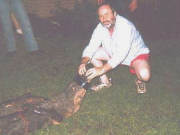
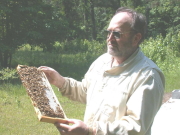
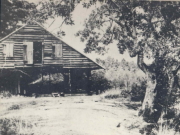

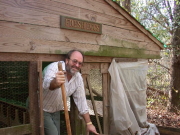
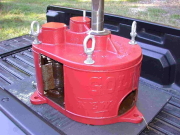
_(Kettle-bbq)-t1.jpg)
(FMCo_Valdosta)-t.jpg)
Quitman_Manufacturing_Co-t.jpg)
02-t.jpg)
_Golden_2-t.jpg)

-t.jpg)
_(82)-t.jpg)
-t.jpg)
%20QFM_14-t.jpg)
-t.jpg)
-t.jpg)
_(92)-t.jpg)
_(93)-t.jpg)
_(74)-t.jpg)